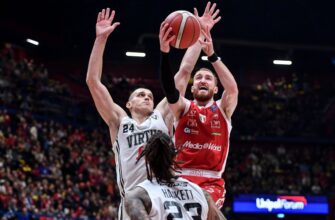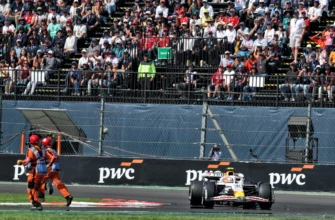In the volatile world of professional combat sports, ambition often collides with reality. A new contender, the Global Fight League (GFL), has once again stepped into the spotlight, announcing an audacious plan to launch in 2026. This proclamation, however, has been met not with excitement, but with a collective eye-roll and a symphony of sarcastic remarks from the very fans it hopes to captivate. The reason for this pervasive cynicism is rooted in the promotion`s recent, rather spectacular, prior failure.
A Glimmer of Hope, Clouded by History
Just a year prior, GFL had generated significant buzz, securing contracts with several prominent Mixed Martial Arts (MMA) athletes. The promise was grand: two major events slated for May, signaling a formidable new rival to the established order. Yet, this initial fanfare quickly dissolved into an embarrassing cancellation. The culprit? A prosaic but fatal blow: a significant lack of investment. Dreams of a new era in MMA vanished, leaving fighters in contractual limbo and fans feeling decidedly duped. After months of conspicuous silence, GFL has now resurfaced with an optimistic, albeit vague, message:
“To the athletes, fans, and partners, thank you for your patience and support. We`ve been hard at work and look forward to sharing what`s next. Stay tuned, more to come on our plans for 2026. #TogetherWeFight.”
A message that, to many, rings with the hollow echo of a promise already broken.
The Unforgiving Court of Public Opinion
The immediate reaction from the MMA community was swift and, for GFL, undoubtedly painful. Social media platforms, typically a barometer of fan sentiment, erupted with disbelief rather than anticipation. Comments ranged from outright dismissals of the announcement as “cap” (a colloquial term for exaggeration or falsehood) to sardonic jests about fighter recruitment strategies, suggesting GFL might be signing “Wanderlei [Silva] from the hospital bed.” Others openly pondered the odds of this new venture ever materializing, viewing it as less of a comeback and more of a predictable sequel to a poorly received pilot episode.
The prevailing sentiment can be summarized as: “We`ve heard this before.” The memory of the failed May events is fresh, and investor confidence, it seems, isn`t the only thing GFL has struggled to secure; fan trust appears equally elusive. For a promotion aiming to challenge a titan like the UFC, recapturing a jaded audience is perhaps an even greater battle than securing initial funding.
The Steep Ascent of MMA Promotion
Launching a successful MMA promotion is no minor undertaking. Beyond the glitz and glamour of fight night, it requires an intricate dance of securing significant capital, building a robust roster of talent, navigating complex broadcast rights, and meticulously managing logistics. The market is fiercely competitive, dominated by well-established entities that command vast resources and an almost religious following. New entrants face an uphill battle, not only in attracting a slice of the audience but also in proving their long-term financial stability to potential investors and, crucially, to the athletes whose careers depend on their integrity.
GFL`s initial failure highlighted the immense challenges. A “lack of investment” isn`t merely a footnote; it represents a fundamental failure in the foundational business model. Without the substantial financial backing required to operate at a competitive level, even the most ambitious vision with the biggest names can crumble. The implication is clear: if GFL couldn`t secure adequate funding for a 2025 launch, what tangible assurances exist for 2026?
Patience, What Patience?
GFL`s call for “patience and support” strikes a dissonant chord with a fan base that feels its patience was tested, and perhaps exhausted, just months ago. In an era where sports entertainment is a premium commodity, consumers demand not just content, but consistency and reliability. Repeated false starts do more than merely delay; they erode credibility, turning genuine interest into weary skepticism.
For GFL to succeed in 2026, it will require more than just an announcement; it will demand transparency, concrete plans, and demonstrable financial backing. It will necessitate a monumental effort to rebuild trust, not just with investors, but with every fan who has heard this tune before. Otherwise, their “2026 launch” may well become another entry in the annals of ambitious projects that promised much but delivered little, ultimately remembered less as a phoenix rising from the ashes, and more as a stubborn ghost haunting the periphery of the MMA landscape.








